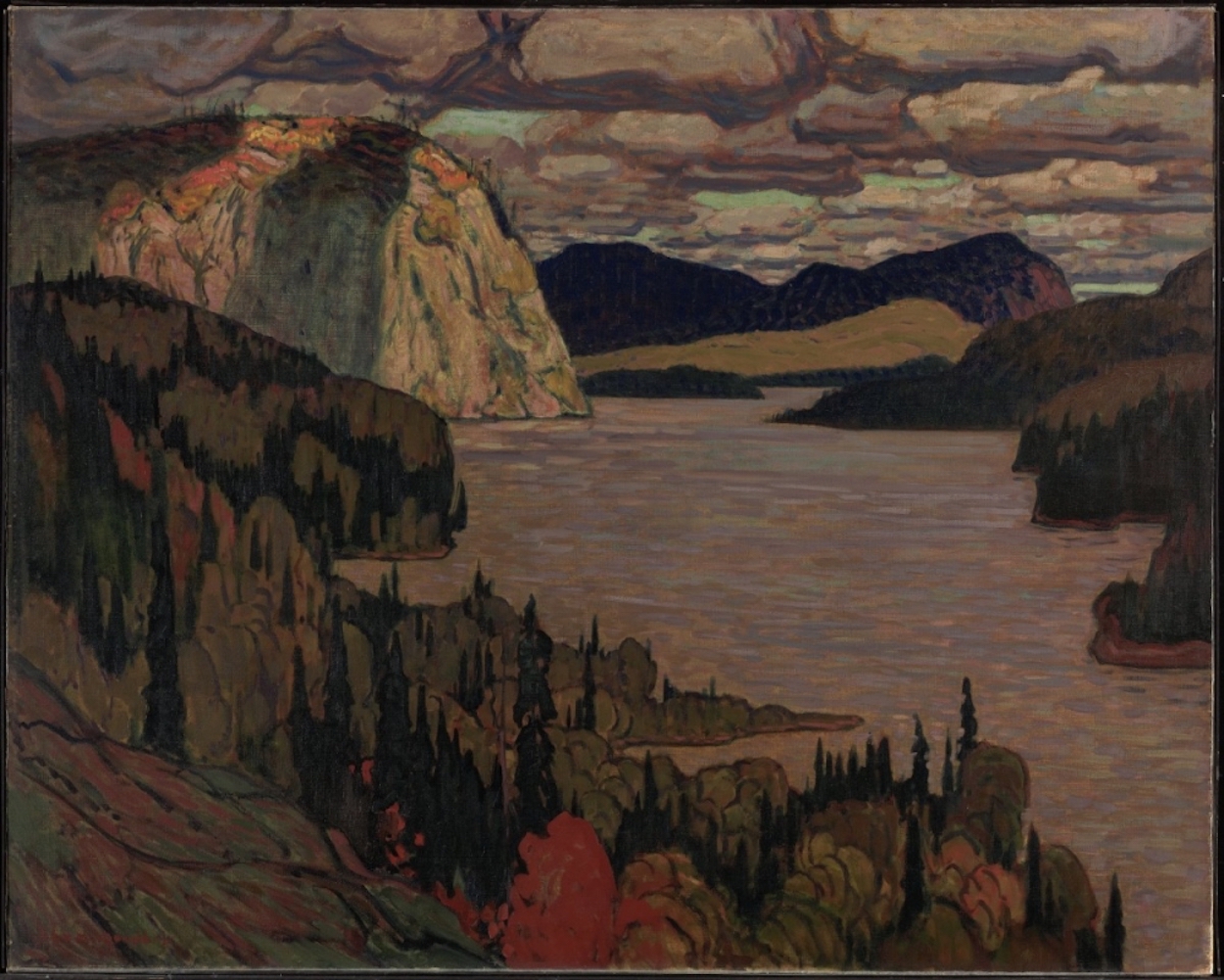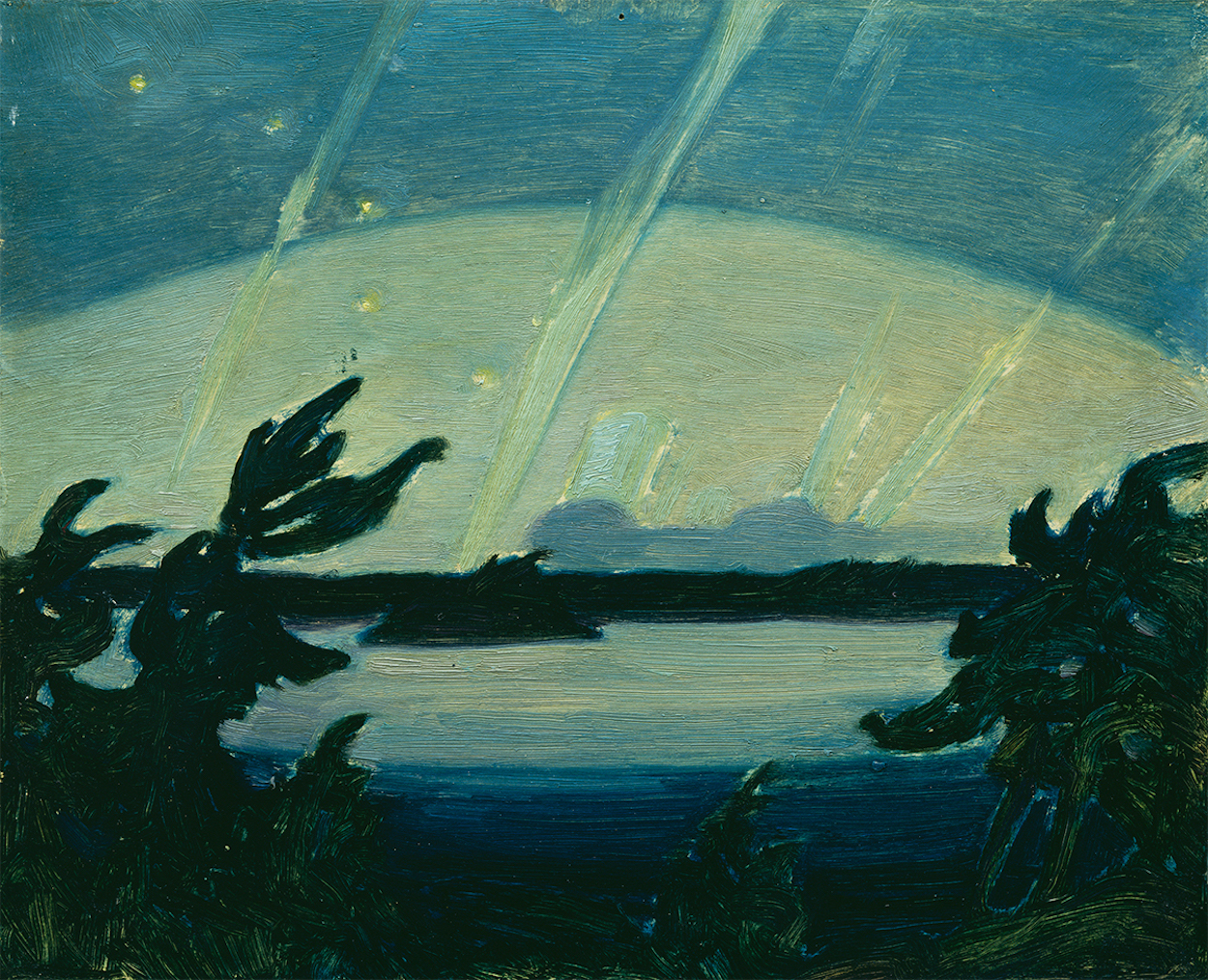James Edward Hervey (J.E.H.) MacDonald was born at Durham, England, in 1873 and immigrated to Canada with his parents in 1887. He trained at the Central Ontario School of Art and Design. In 1895, he became a designer at Grip & Co., a commercial art firm in Toronto. There he worked with many of the artists who were to become members of the Group of Seven, the first truly Canadian art movement, which he and Lawren Harris co-founded. MacDonald was a generation older than the other Group members and his death in 1932 resulted in the breakup of the Group.
MacDonald and Harris were influenced by an exhibition of Scandinavian Wilderness Art held in 1913 at Buffalo, New York. He resolved to adapt this style to Canadian landscape painting to express the character and spirit of Canada. They arranged for the use of an Algoma Central Railway boxcar that was parked at various sidings along the route and provided them shelter and living quarters on their painting exhibitions. Thus, the paradox that MacDonald and his fellow artists were really just footsteps from civilization while sketching the remote Canadian wilderness. The Solemn Land was completed in early 1921 from sketches made on the previous year’s trip and was acquired by The National Gallery of Canada later that year.
The painting depicts a vast canyon carved by the Montreal River in the Algoma region of Ontario, north of Sault Ste. Marie. Heavy clouds are threatening rain showers, but still allow a golden pattern of light to reflect on the surface of the river. The river and the sky are connected by a rain shadow on the left and the same bluish color is used in both. The evergreen forest is lit up by the afternoon sun and is interspersed with the changing colors of autumn. A stand of maple trees in the foreground is resplendent in red; the red maple leaf now being a symbol of Canada. The late afternoon sun shines yellow polka dots of light on the cliffs in the center left and a long band of yellow on the hills in the background. The natural beauty and grandeur of the Canadian wilderness is evident.
- Norman Clark
P.S. Mysticism was a popular subject for the late 19th century artists. See here the masterpieces created by the classics like van Gogh and lesser known artists.


 J.E.H. MacDonald
J.E.H. MacDonald